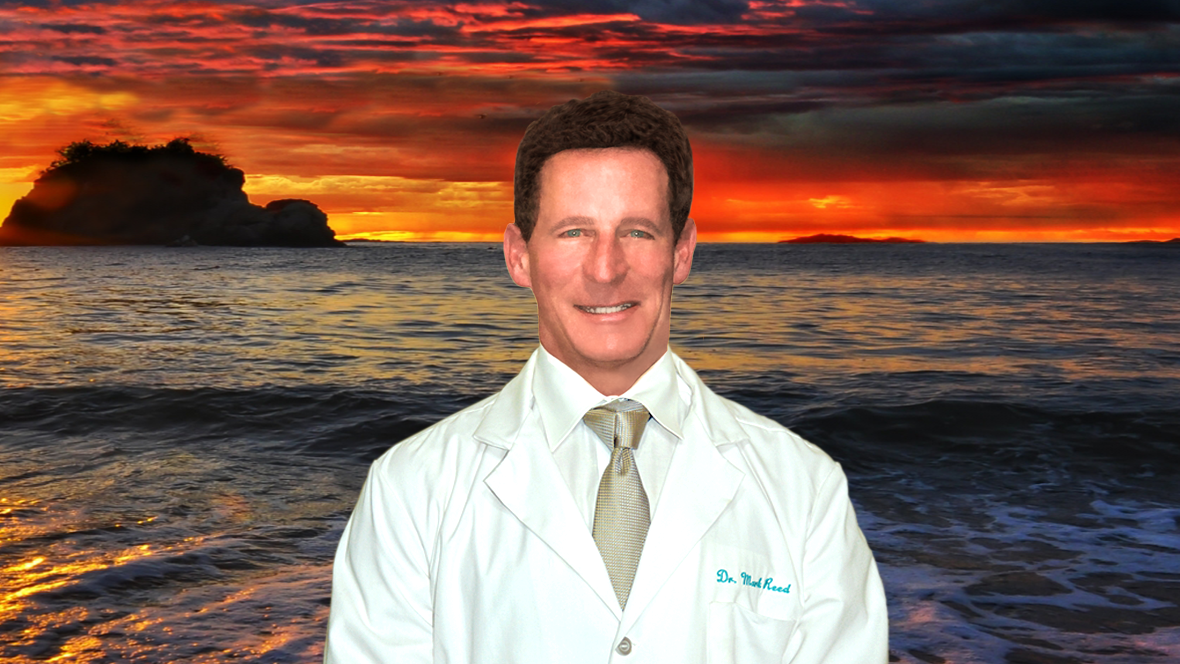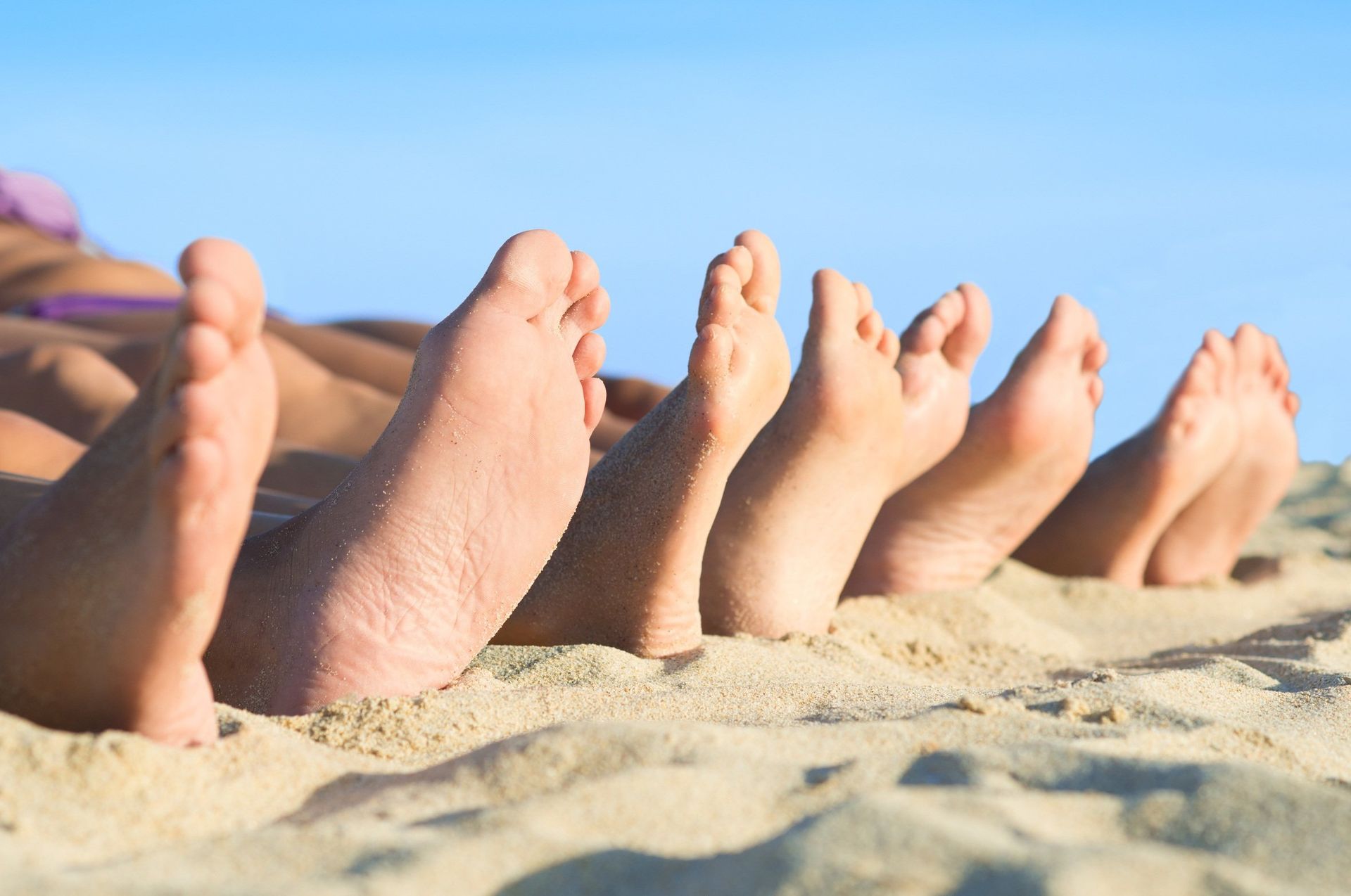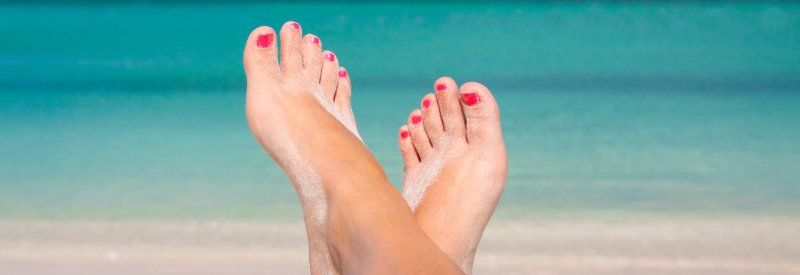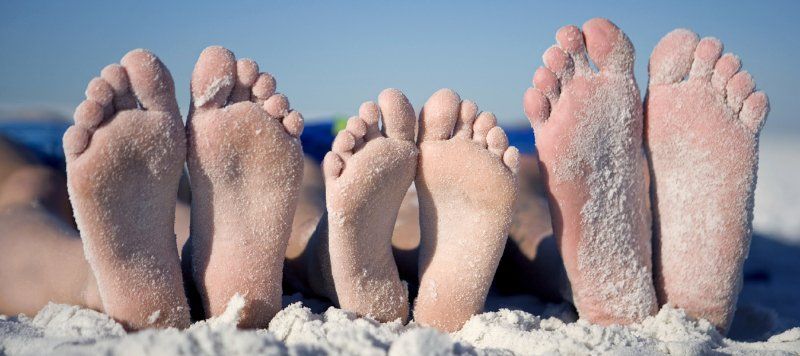Call Now -- Be Seen Today!
714-528-3668
Info@Podiatry.Care
Calluses and Corns
Corns and
calluses are similar in their podiatry presentation in that extra
skin forms in response to pressure on the skin causing foot pain.
In the case of corns, the extra skin forms between the toes.
In the case of calluses, the extra skin forms on the outside
of the foot. Corns are usually from the knuckle joints on one
toe pressing on the knuckle joint on the adjacent toe. Usually,
a seed or central nucleus is seen when examining the corn. Calluses
occur due to many causes but the most common cause is incorrect
padding in the shoes, flat feet, a bone spur and hammertoes.
In rare instances, the painful callus is an abnormal sweat gland
that has became impacted with hard skin. The names given
to corns and calluses by doctors are numerous depending on their
location and presentation.
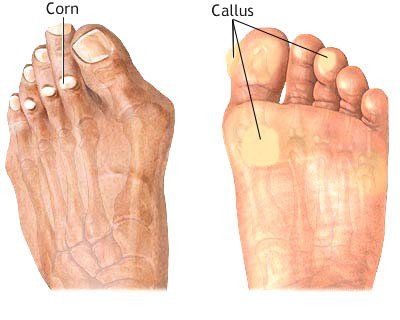
Treatment Considerations
Treatment
for corns has many remedies including many types of products
at the store. These products rarely correct the underlying problem.
Corn and callus pads continue to be the main home treatment.
The best corn and callous pads are made of clear silicone. The
excessive pressure to the skin that is causing the corn or callous
must be addressed. Because so many women suffer with painful
corns and calluses, many seek the help of a Podiatrist.
Using a callous file
or rough stone does help but usually leaves a rough skin surface.
Using an electric burr such as a Dremel moto-tool to reduce
the calluses and corns on a weekly basis is the easiest and most
successful home treatment. Using a battery type Dremel
Drill with a medium grit sand paper attachment is the best choice
and can be found at any hardware store. There are many other callous electrical kits around such as at Sharper Image but the Dremel Drill is a better unit for continuous use. Acid plasters are also used in reducing calluses and corns but generally the corn patch only softens the callous and does not remove the excessive skin. In the patient with poor blood supply and/or if the person has diabetes, corn pads are dangerous because a hole can occur from the acid without any warning due to diminished skin sensitivity.
For generalized calluses
to the ball of the foot, for lady's shoes, the silicone insoles
are the thinnest and most comfortable of the pads you can buy.
Avoid the foam types that quickly lose their cushioning characteristic
after about a month of using the pad. Spenco is an excellent
padding material but because it is neoprene (the same material
that is used to make wetsuits) it can be hot to use in a shoe.
During the winter, the use of Spenco is welcomed in colder climates.
When placing new pads in athletic shoes, it is important
to make sure to remove the foam pad that came with the shoe.
To remove the pad, just pull up under the arch part of the pad.
If the pad will not come out, do not tear it out. Instead, place
the new insert over the pad.
If there is a bone spur
or a toe deformity such as a hammertoe, surgery may be warranted
to correct the cause of the corn or callous. Many times
over years of pressuring the skin, the bone will from a spur
and the spur grows with the amount of pressure on the skin. Surgery
for digital deformities and bone spurs has a high success rate.
Typically, it will require a couple of months before the swelling
leaves the toes. The swelling in the toes after surgery
is normal and is part of the healing process. If a patient
had to wear closed toed shoes due to cold weather, the swelling
that is present after toe surgery may be a problem and should
be explored prior to undergoing digital surgery. In
summery, corns and calluses is just the body's way of responding
to pressure on the skin and the key to keeping calluses and corns
in check is getting the pressure under control. Sometimes, a
bony prominence or a toe deformity is the cause to the calluses
and corns and needs to be surgically corrected.
DISCLAIMER: MATERIAL ON THIS SITE IS BEING PROVIDED FOR EDUCATIONAL AND INFORMATION PURPOSES AND IS NOT MEANT TO REPLACE THE DIAGNOSIS OR CARE PROVIDED BY YOUR OWN MEDICAL PROFESSIONAL. This information should not be used for diagnosing or treating a health problem or disease or prescribing any medication. Visit a health care professional to proceed with any treatment for a health problem.

